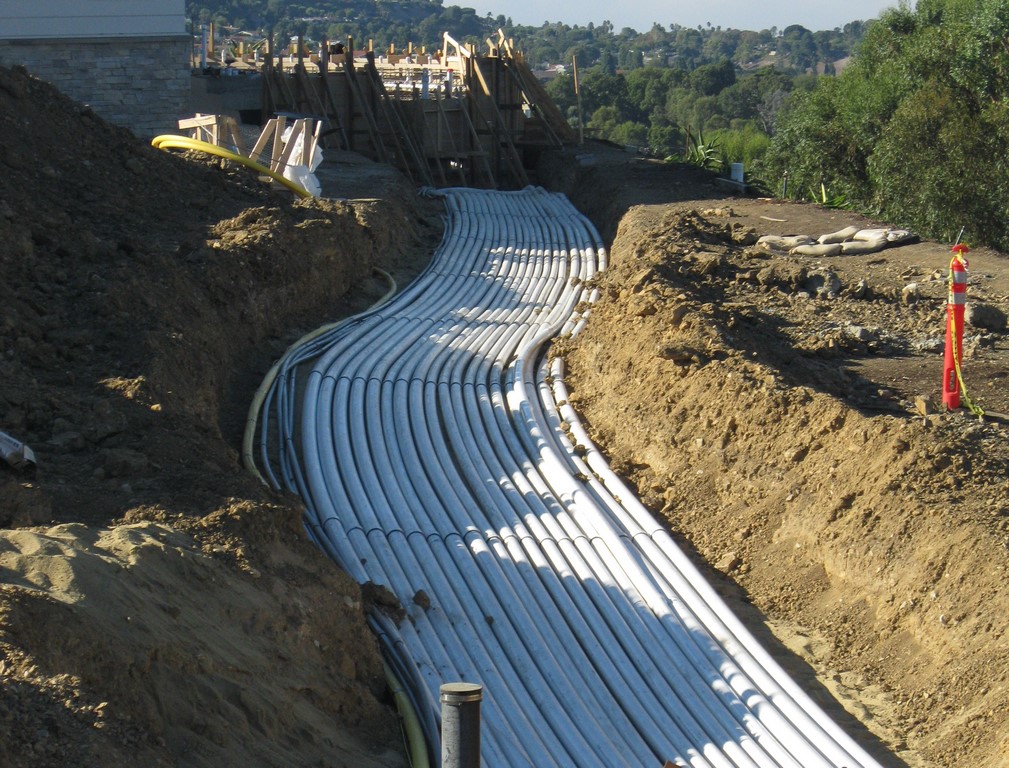Fine Points: Pipes in Trenches


In this first installment of our new series exploring the “fine points” of watershape construction, Kevin Cobabe gets down to basics about running multiple pipes in trenches. As simple as it seems, he says, there are a handful of key issues that are important to keep top of mind when working beneath your feet.
By Kevin Cobabe
All pools have plumbing that runs between the vessel and the equipment pad. With very few exceptions, those pipes are laid in trenches. It’s a fundamental plumbing element that might seem as simple as can be, and while in some respect that’s true, there are points of workmanship that should always be observed.
FLAT OUT
Whenever possible plumbing should be laid flat, not stacked. The reason comes down to access. If for whatever reason you need to reach a pipe that is underneath another pipe, it requires far, far greater effort and expense if stacked.
Fact is, when you’re solvent welding hundreds of connections, there is a chance you’ll have a leak somewhere. Having the lines splayed flat makes correcting that problem much easier. We only stack pipes when there’s no other choice.
LOGICAL LAYOUT
As you arrange pipes in the trench, you want them in logical order relative to their connection points on the equipment pad. A line running to a pump that’s on the far left of the pad, should be located in the far left of the trench, and so on. The same is true for return lines. Again, this may sound simplistic, but if you don’t lay the lines down in logical order, you’ll wind up having to either relocate equipment, or crisscross lines.
In order to properly sequence the lines, you need to have your mechanical design in place prior to installation, meaning, in this case, the equipment pad layout.
DEPTH AND DIRT
As a rule, we try to trench two-feet deep, in order to avoid deck-drain pipes and other things closer to the surface. Naturally, if we’re dealing with a slope the depth of the trench will vary up or down in some places. You want to keep the pipes at the same elevation between the equipment pad and vessel; otherwise, you create the potential for an air-lock condition, and you never have the pump fully primed.
Soil conditions can come into play, as well. If the soil is expansive clay, we’ll try to allow for a little more room in the trench to accommodate the soil expansion. And, we’ll often back fill the trenches with sand. If the soil conditions vary within the site, you might change the plumbing path to avoid a rocky area, for example.
Likewise, we try to avoid tree roots whenever possible. We certainly don’t want to damage existing trees that are staying in place; and, depending on the type of tree, the roots can be invasive and cause significant damage to plumbing runs over time.
PLAND AHEAD
Planning the plumbing run locations in the early stages of design helps ensure you have enough space to accommodate a wide enough trench. Keep in mind that, with complex systems having big plumbing, the trench could be several feet wide.
You’ll be glad you figured that out head of time. As the saying goes, “Proper planning prevents poor performance.”
Kevin Cobabe is president of Dynamic Pool & Spa Construction, a high-end watershaping firm based in Redondo Beach, Calif. He is also a founding member of the International Watershape Institute (IWI), faculty member for Watershape University and a regular contributor to watershapes.com.










